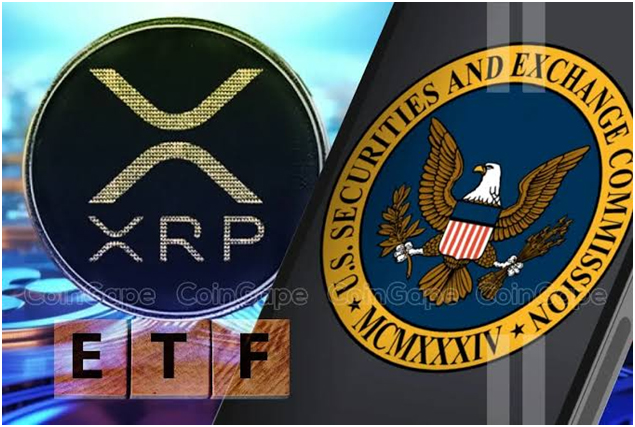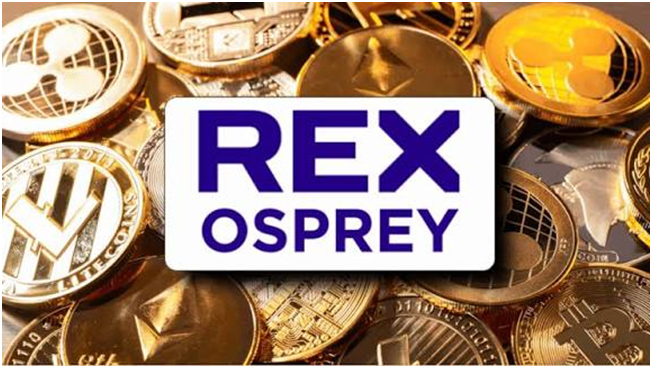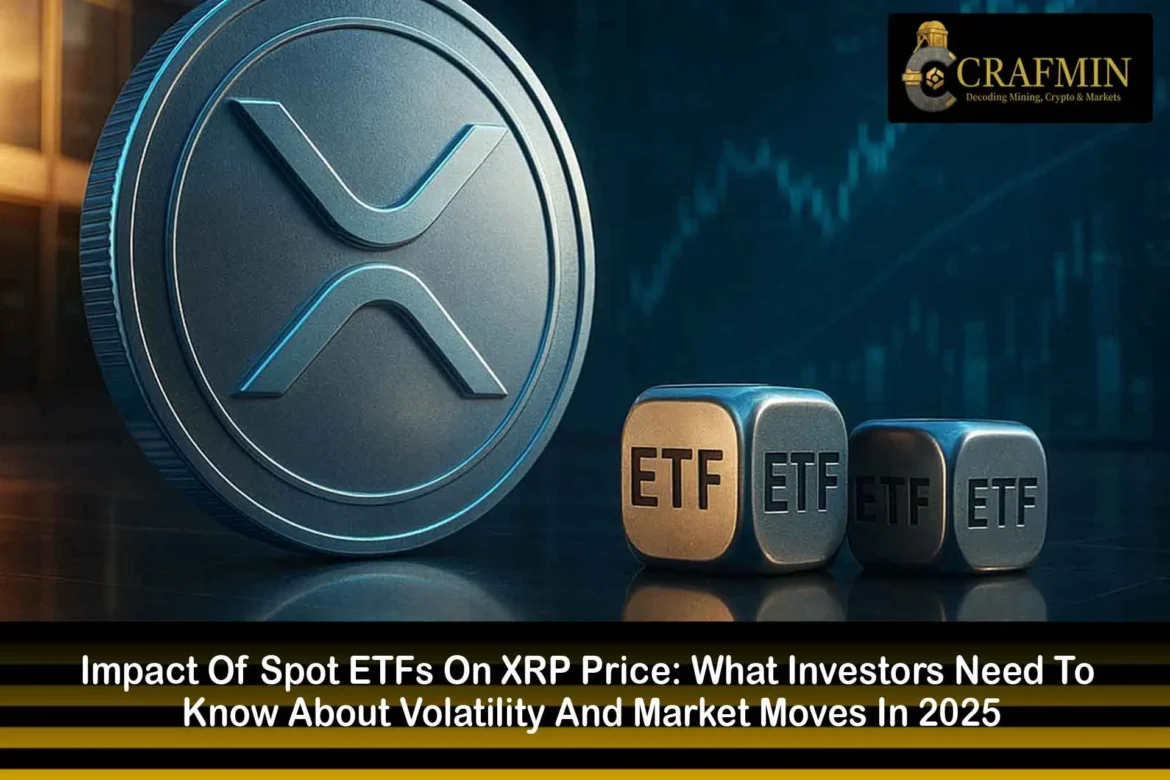XRP of Ripple might be heading towards a very volatile period soon due to spot exchange-traded funds (ETFs) getting approval in the US that are linked to the token. After waiting for a long time, the US Securities and Exchange Commission (SEC) seems to be ready to give a green light to a few applications for XRP ETFs that may, in turn, alter the trading landscape in the market.

XRP could face high volatility as the US approves spot ETFs linked to the token.
Why Do Spot ETFs Matter For XRP Price?
The price of XRP is heavily dependent on the presence of the spot ETFs since they would be able to effectively unify the traditional and crypto investors. By means of ETFs, investors can indirectly own the tokens and trade them in regulated markets. This convenience tends to attract more people and also creates a larger pool of funds available for trading.
XRP was the first to be associated with the REX-Osprey XRP ETF (XRPR), which debuted on 18 September 2025 at a price of $25.73 but quickly descended to $23.33 by 22 September. On 15 October, XRPR was trading around $19.89. At the same time, the price of the underlying XRP fell from $3.08 to $2.41. Even with the decline, REX-Osprey has been recognised as a pioneer for being the first product in the US that provides direct exposure to XRP.
What Makes The US Approval Different?
Currently, spot XRP ETFs are being traded in Canada and Europe. In the past, however, each US fund was required to get a separate listing approval under Rule 19b-4. The SEC changed that in September, doing away with that restriction and only requiring a prospectus approval for new funds.
According to Bloomberg Intelligence, the SEC is about to decide the filings from Grayscale, 21Shares, Bitwise, Canary, WisdomTree, CoinShares, and Franklin. Analyst Eric Balchunas foresees that approvals were just around the corner and commented, “The baby could come any day.” Thus, if the SEC takes this action, it would be a significant regulatory milestone for XRP.

Spot XRP ETFs trade in Canada and Europe; the US SEC eases approval.
Could Prices Drop After ETF Launches?
The initial experience with Bitcoin (BTC) and Ether (ETH) was quite challenging. The launch of Bitcoin ETFs on 11 January 2024 resulted in a decline of more than 11 per cent in the price of BTC within a week, while BlackRock’s IBIT fell by 16 per cent. However, by March, BTC had a strong rebound and almost doubled in value to 73,000.
Ether’s spot ETFs were introduced in July 2024, and this event prompted a 30 per cent drop in ETH and a 40 per cent drop in BlackRock’s ETHA. It took three months for recovery to happen. The case studies provide evidence for quick corrections followed by stabilisation.
Why Might XRP React Differently?
The 2025 XRP volatility forecast is dependent on distinct structural factors. The sell-off of Bitcoin and Ethereum was mainly due to the liquidation of existing trusts, notably the Grayscale Bitcoin Trust, from which $12 billion was pulled out in the two months ending with the conversion. Those trusts did not benefit from ETFs’ “creation and redemption” mechanism, and thus the entire process led to heavy selling.
XRP does not have a similar trust market, hence forced liquidations of the sort are not likely to happen. Nonetheless, it is possible that traders would take profits right after the ETF listings. Delays in broker rollouts might also slow down inflows to the funds. Also, if the wider economy gets into a risk-averse mode, macro factors could amplify all sell-offs.
Can Institutional Demand Offset The Risks?
With the anticipation of approval growing, it will be the post-launch inflows that will set the tone. Analysts are predicting that the debut volumes will be smaller than those for the Bitcoin or Ether funds, but there will be fewer legal restrictions. The REX-Osprey ETF started with $38 million, which was the best opening of any new US ETF in 2025.
The institutional interest is still on the cautious side, but it is also promising. One of the reasons banks and payment companies are interested in XRP is its practical advantages – it is fast, it costs less, and it consumes less energy. Ripple’s settlement network is so efficient that it processes transactions in mere seconds; thus, XRP is seen as the best option for international payments.

The REX-Osprey ETF launched with $38 million, top US ETF debut 2025.
How Are Banks Viewing XRP Exposure?
Ripple achieved a significant legal win in August 2025 when the SEC decided to stop appeals in its four-year battle. The court’s decision stated that regular sales of XRP were not securities transactions. This legal certainty made fund managers and exchanges come to the conclusion of XRP ETFs.
The banks, which have been very careful and conservative in their dealings, now consider XRP to be a link between different currencies, allowing fast international transfers. XRP, unlike Bitcoin’s energy-hungry Proof-of-Work and Ethereum’s slower Proof-of-Stake, has a consensus among validators in just three to five seconds with very low fees.
XRP is more efficient than traditional systems such as SWIFT, which usually take hours and charge multiple fees. A typical payment of euros to yen through XRP converts euros to XRP locally, transmits across the ledger, and reconverts to yen all within seconds.
SBI Remit in Japan is already using XRP for transfers to Southeast Asia, and PNC Bank in the US uses RippleNet for cross-border payments without holding XRP directly. Such applications are the basis of long-term investment interest even if there are risks of volatility in the near term.
Also Read: XRP Price Analysis Signal Buy as Market Consolidates
FAQs
Q1: What is the expected effect of spot ETFs on the price of XRP?
XRP may experience short-term volatility akin to that of Bitcoin and Ethereum, but may eventually level off as institutional inflows increase.
Q2: What is the outlook for XRP volatility in 2025?
Professionals predict that there will be more significant fluctuations at the time of ETF launches and then a slow recovery as acceptance increases.
Q3: Is the news regarding the XRP spot ETF clear?
Yes, approvals are expected to come soon, and major asset managers are already waiting for SEC clearance.
Q4: What makes banks interested in XRP?
They consider the advantages of XRP that it settles quickly, and at a low cost, and that it can be used as a bridge currency in global transfers so banks appreciate these qualities.

